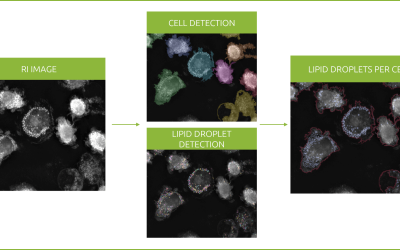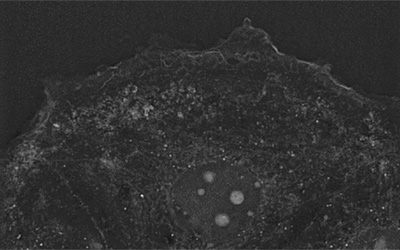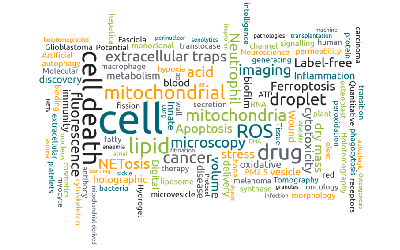Endothelial cells, as mentioned in our previous blogpost (https://www.nanolive.ch/failed-mitotic-exit-in-human-umbilical-vein-endothelial-cells/), constitute the inner layer of blood and lymphatic vessels. They also play a role in substance and cell turnover between bloodstream and adjacent tissues.
Human Umbilical Vein Endothelial Cells (HUVECs) are a well-established model system used to study endothelial cells regulation and behaviour. PromoCell GmbH kindly provided us with a high quality single donor, cryopreserved HUVEC culture. A sample of HUVECs incubated with endothelial cell growth medium and fibronectin was observed under Nanolive’s 3D Cell Explorer (1 image every 15 seconds for 6 hours and 30 minutes).
HUVEC culture with fibronectin
Fibronectin is a glycoprotein of the extracellular matrix that facilitates attachment and cytoplasmic spreading of in vitro cells. Addition of fibronectin has been proved to increase survival and adherence of HUVEC cells in culture [1], [2].
Cell-cell interactions
In order to maintain integrity of the endothelium, endothelial cells show a great number of cell-cell interactions, mainly tight-junctions and adherens junctions[3], [4].
The maintained cell-cell interactions observed in the sample may respond to HUVECs’ natural role regarding the formation of layers in veins (Figure 1). Tight junctions and adherent junctions control vascular permeability in endothelium[3]–[6].
Cell-matrix interactions
During angiogenesis, cell-matrix interactions are crucial (see Figure 1). Such structures are involved in migration, invasion and survival of cells throughout the angiogenic process [7].
We can also observe filopodia and lamellipodia with great details (Figure 1) thanks to Nanolive’s imaging capacity to catch membrane deformations. Those structures are essential for migration, cell-cell interactions or environment sensing, amongst others. While filopodia appear as long, thin protrusion-like structures that emerge from the cellular membrane, lamellipodia are broad, sheet-shaped structures containing thin and short interconnected actin filaments[8].
Cell-matrix interactions are vital in cancer-related angiogenesis[7], [9]–[11], and HUVEC cultures are optimal for research in this topic[12]–[15].

Figure 1. Cell-cell and cell-matrix interactions in HUVEC culture. Image extracted from long-term live cell imaging footage with the 3D Cell Explorer.
[1] T. P. Cooper and M. V Sefton, “Fibronectin coating of collagen modules increases in vivo HUVEC survival and vessel formation in SCID mice.,” Acta Biomater., vol. 7, no. 3, pp. 1072–83, Mar. 2011.
[2] R. A. Clark, J. M. Folkvord, and L. D. Nielsen, “Either exogenous or endogenous fibronectin can promote adherence of human endothelial cells.,” J. Cell Sci., vol. 82, pp. 263–80, Jun. 1986.
[3] E. Dejana, “Endothelial cell–cell junctions: happy together,” Nat. Rev. Mol. Cell Biol., vol. 5, no. 4, pp. 261–270, Apr. 2004.
[4] C. Cerutti and A. J. Ridley, “Endothelial cell-cell adhesion and signaling.,” Exp. Cell Res., vol. 358, no. 1, pp. 31–38, 2017.
[5] G. M. Cooper, “Cell-Cell Interactions,” 2000.
[6] P. Turowski et al., “Phosphorylation of vascular endothelial cadherin controls lymphocyte emigration,” J. Cell Sci., vol. 121, no. 1, pp. 29–37, Jan. 2008.
[7] E. Iivanainen, V.-M. Kähäri, J. Heino, and K. Elenius, “Endothelial cell–Matrix interactions,” Microsc. Res. Tech., vol. 60, no. 1, pp. 13–22, Jan. 2003.
[8] P. K. Mattila and P. Lappalainen, “Filopodia: molecular architecture and cellular functions,” Nat. Rev. Mol. Cell Biol., vol. 9, no. 6, pp. 446–454, Jun. 2008.
[9] C. Walker, E. Mojares, and A. del R. Hernández, “Role of Extracellular Matrix in Development and Cancer Progression,” Int. J. Mol. Sci., vol. 19, no. 10, 2018.
[10] N. E. Campbell, L. Kellenberger, J. Greenaway, R. A. Moorehead, N. M. Linnerth-Petrik, and J. Petrik, “Extracellular matrix proteins and tumor angiogenesis.,” J. Oncol., vol. 2010, p. 586905, Jun. 2010.
[11] A. E. El-Kenawi and A. B. El-Remessy, “Angiogenesis inhibitors in cancer therapy: mechanistic perspective on classification and treatment rationales.,” Br. J. Pharmacol., vol. 170, no. 4, pp. 712–29, Oct. 2013.
[12] Y. Li et al., “γ-Tocotrienol inhibits angiogenesis of human umbilical vein endothelial cell induced by cancer cell,” J. Nutr. Biochem., vol. 22, no. 12, pp. 1127–1136, Dec. 2011.
[13] H. Yukawa et al., “Imaging of angiogenesis of human umbilical vein endothelial cells by uptake of exosomes secreted from hepatocellular carcinoma cells,” Sci. Rep., vol. 8, no. 1, p. 6765, Dec. 2018.
[14] H. W. Chung and J.-B. Lim, “High-mobility group box-1 contributes tumor angiogenesis under interleukin-8 mediation during gastric cancer progression.,” Cancer Sci., vol. 108, no. 8, pp. 1594–1601, Aug. 2017.
[15] B. Zhang et al., “TSLP promotes angiogenesis of human umbilical vein endothelial cells by strengthening the crosstalk between cervical cancer cells and eosinophils,” Oncol. Lett., vol. 14, no. 6, pp. 7483–7488, Oct. 2017.
Read our latest news
Revolutionizing lipid droplet analysis: insights from Nanolive’s Smart Lipid Droplet Assay Application Note
Introducing the Smart Lipid Droplet Assay: A breakthrough in label-free lipid droplet analysis Discover the power of Nanolive's Smart Lipid Droplet Assay (SLDA), the first smart digital assay to provide a push-button solution for analyzing lipid droplet dynamics,...
Food additives and gut health: new research from the University of Sydney
The team of Professor Wojciech Chrzanowski in the Sydney Pharmacy School at the University of Sydney have published their findings on the toxic effect of titanium nanoparticles found in food. The paper “Impact of nano-titanium dioxide extracted from food products on...
2023 scientific publications roundup
2023 has been a record year for clients using the Nanolive system in their scientific publications. The number of peer-reviewed publications has continued to increase, and there has been a real growth in groups publishing pre-prints to give a preview of their work....
Nanolive microscopes
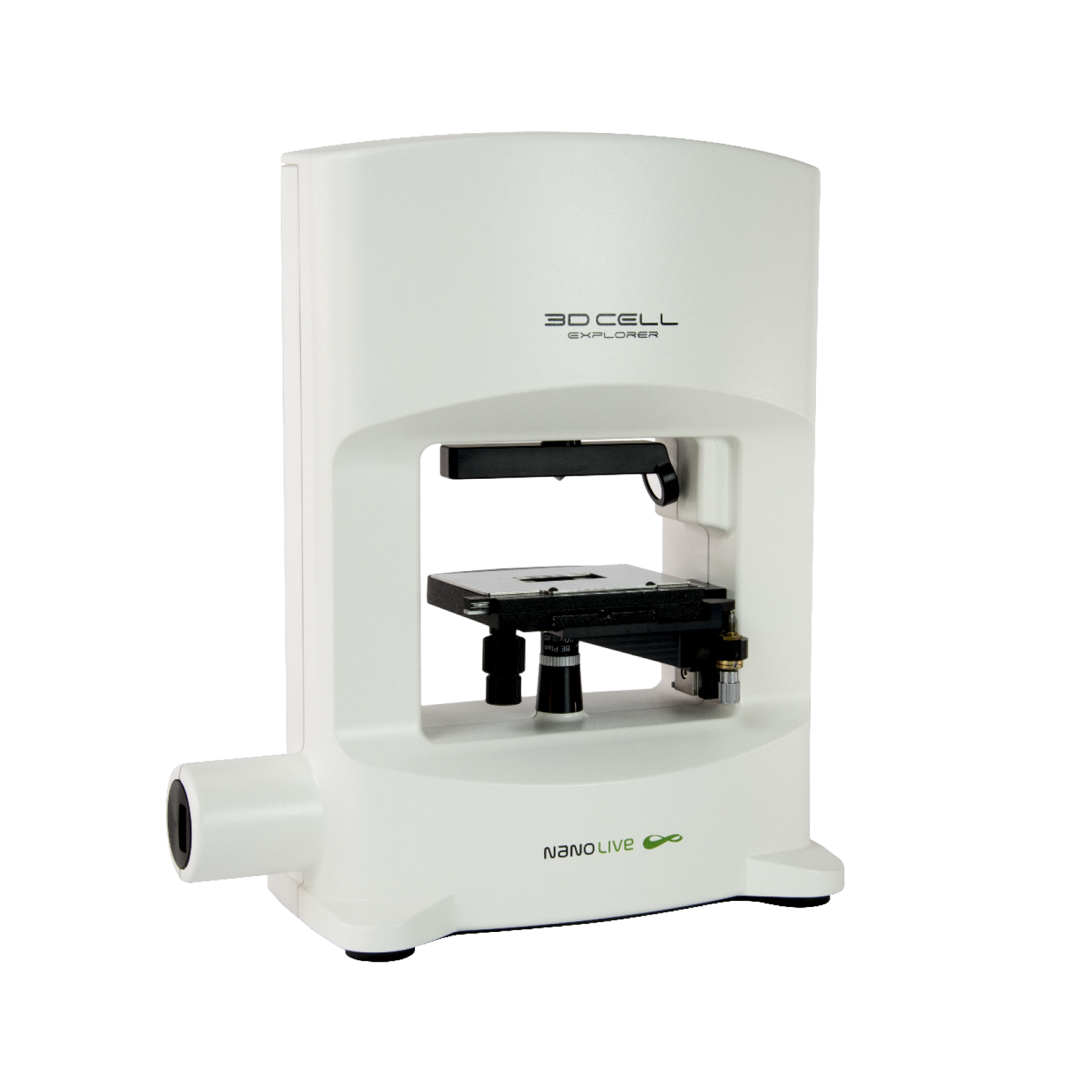
3D CELL EXPLORER
Budget-friendly, easy-to-use, compact solution for high quality non-invasive 4D live cell imaging
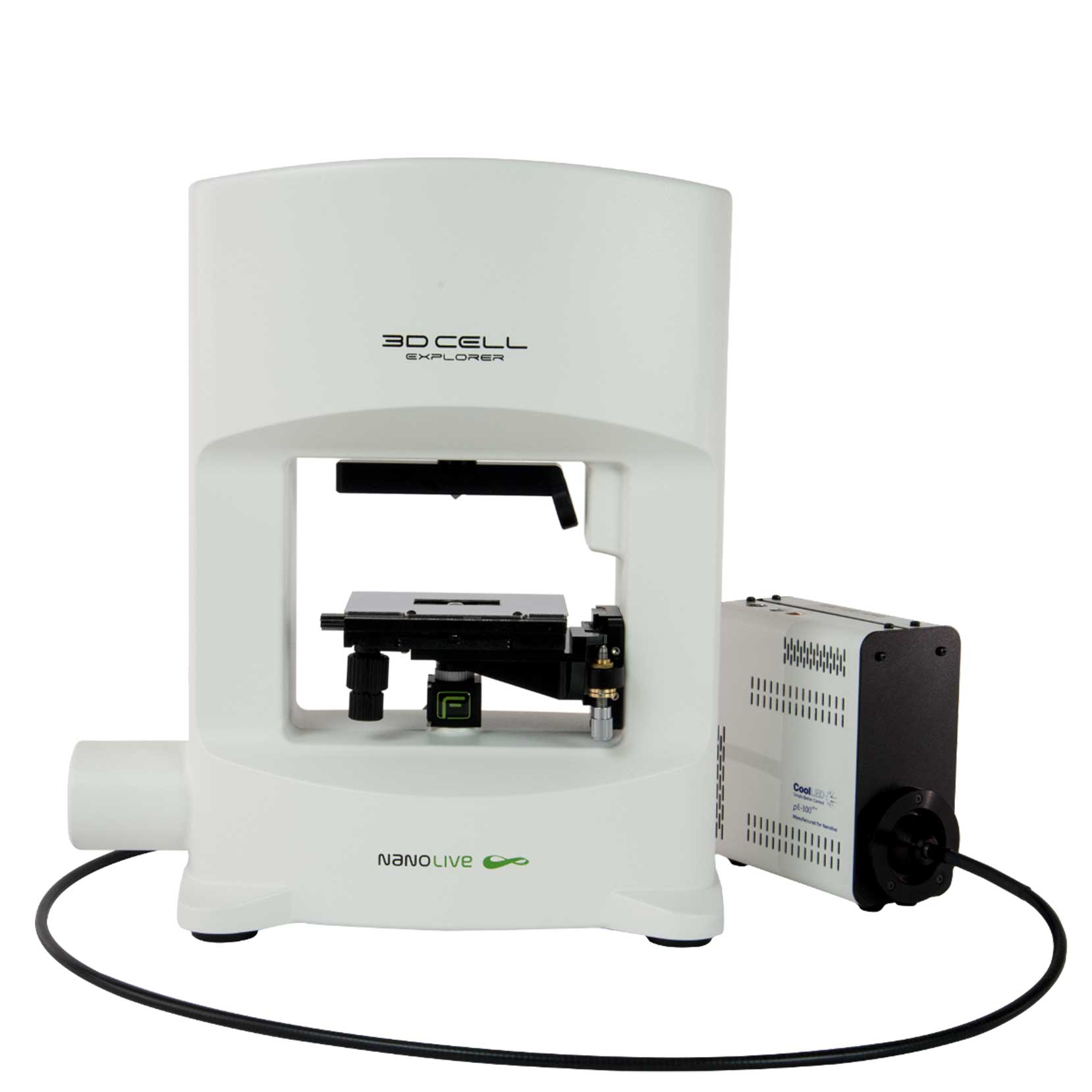
3D CELL EXPLORER-fluo
Multimodal Complete Solution: combine high quality non-invasive 4D live cell imaging with fluorescence

CX-A
Automated live cell imaging: a unique walk-away solution for long-term live cell imaging of single cells and cell populations

